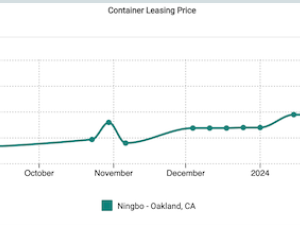TOKYO - Mitsui O.S.K. Lines, Ltd. (the Company) today announced that its Board of Directors has confirmed plans to implement specific measures for business structural reforms in its dry bulker and containership operations, and decided to record an extraordinary loss of ¥179.3 billion as a result of those reforms. The Company previously issued a press release announcing that it would implement the above-mentioned structural reforms in the dry bulker and containership businesses, and projected an extraordinary loss of about ¥180.0 billion for the fourth quarter of this fiscal year. (For details, refer to the press release “Mitsui O.S.K. Lines, Ltd. Announces Revision of FY2015 Outlook and Business Structural Reforms” issued on January 29, 2016.)
Specific measures for business structural reforms and recording of extraordinary loss (1) Time frame to implement specific measures and record extraordinary loss The Company decided to conduct a drastic review of its business models related to mid- and small-size bulkers and scale down the Capesize bulker fleet in the dry bulker business, and take steps that include recording an impairment loss on business assets and so on in the containership business. It will implement some of the measures starting in April 2016, but will record the loss from business structural reforms in the fourth quarter of this fiscal year’s consolidated financial results.
Dry Bulker Business
| Specific measures |
Time frame for implementation |
Extraordinary loss (Q4 FY2015) |
| Early cancellation of time charter-in contracts by MOLBC (Note 1) |
Starting April 2016 |
-¥40.5billion |
| Transfer time charter-in contracts to the Company from MOLBC (Note 1) |
Starting April 2016 |
-¥30.5billion |
| Sale of Capesize bulkers |
Starting April 2016 |
-¥36.9 billion |
| Early cancellation of Capesize bulker time charter-in contracts |
March 2016 |
-¥9.5 billion |
(Note 1) MOL consolidated subsidiary MOL Bulk Carriers Pte. Ltd.
Containership Business
| Record impairment loss on fixed assets in containership business |
March 2016 |
-¥60.7 billion |
| Sale of containerships Starting |
April 2016 |
-¥1.2 billion |
| Total |
|
-¥179.3 billion |
Details of specific measures
Dry Bulker Business
Drastic review of business models related to mid- and small-size bulkers
In fiscal year 2012, the Company implemented business structural reforms. As a part of the reforms, it established MOLBC in Singapore as the key operator of free vessels in the mid- and small-size bulker markets. However, the Company deemed it necessary to conduct an urgent review of its business models due to the prolonged sluggish dry bulker market, and decided to implement a major scale-down of the fleet to minimize its market exposure by free vessels, dissolve MOLBC, and transfer its business operations from Singapore to Tokyo. The Company will assume, as the key fleet, about half of the mid- and long-term chartered-in vessels currently operated by MOLBC, to meet expected demand for cargo transport. On the other hand, it decided to move ahead with the return of other vessels. It will proceed with all those measures while working to gain the understanding and cooperation of relevant business partners.
Scale-down of Capesize bulker fleet
In a move to reduce the number of surplus vessels in service, the Company decided to reduce its Capesize fleet by about 10% by cancelling some charter-in contracts and selling some vessels it owns. It has already started returning chartered-in vessels based on agreements with business partners.
Restructuring business organization
As announced in the February 26, 2016 press release “MOL to Establish New Business Units, Restructure Dry Bulk Business Division,” effective April 1, the Company restructured its internal dry bulker business divisions and established the new Dry Bulk Business Unit. This aims to strengthen internal ties among different divisions to more swiftly meet diversified customer needs by optimizing its portfolio of ship types. MOLBC is slated to suspend its business operations by the end of September 2016. MOLBC will continue to serve the customers it is responsible for until it ceases operations. After that, the Dry Bulker Division B and Coal Carrier Division, which will be established effective April 1, 2016, will assume responsibility for serving MOLBC’s customers.
Containership Business
Considering the prolonged market stagnation and freight rates on many key routes hovering at historic lows, the Company decided to record impairment loss on fixed assets such as all vessels owned by the group companies and write off their book values down to recoverable values based on an examination of the future recoverability of the containership business, and to sell some of its surplus vessels.
Reasons for implementation
The group has forged ahead with strategies to promote growth and stabilize profits based on the midterm management plan “STEER FOR 2020”. However, the dry bulker market and containership freight rate market remain at levels well below the Company’s previous assumption. In the Company’s judgment, drastic business structural reforms are essential to cope with this radically different business environment. So it decided to implement specific measures as outlined above.
Impact on financial results of the full year ending March 2016, and future outlook
The Company will record a consolidated extraordinary loss of ¥179.3 billion in the fourth quarter of this fiscal year due to a series of specific measures.
The full-year forecast announced on January 29, 2016, is not changed because this extraordinary loss is already included in the forecast for consolidated financial results for the year ending March 2016.
The year-end dividend and annual dividend for the fiscal year ending March 2016 will be ¥1.50 per share and ¥5.00 per share respectively, the same as announced on January 29, 2016.
Through these measures, the Company plans to restructure the dry bulker and containership businesses to develop a business structure that generates stable profits. Please note that the Company will announce its forecast for consolidated financial results for the year ending March 2017 based on a thorough review, along with a one-year management plan, at the end of April 2016.





